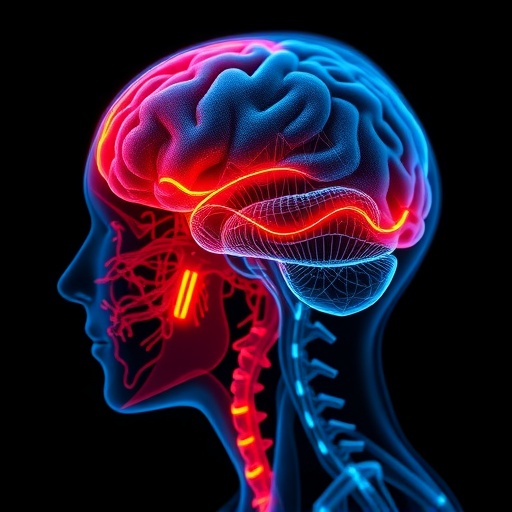Perceptual decision-making—how the brain interprets sensory information to guide choice—is a rich arena rife with complexity. Recent research from Luo, Kim, Gupta, and colleagues sheds unprecedented light on the neural dynamics underpinning this process, revealing how transitions in neural activity modes govern decision commitment. This study unpacks the temporal diversity of single-neuron activities and introduces an innovative computational framework that explains previously puzzling neural phenomena at the heart of cognition.
At the core of perceptual decision-making lies a variety of neuronal response patterns. Some neurons show gradual, ramp-like increases in activity as evidence accumulates—a profile often interpreted as the brain integrating information over time toward a threshold. Others abruptly switch their firing rates in a step-like fashion, signaling a sharp commitment point, while many neurons exhibit intermediate behaviors. This heterogeneity puzzled neuroscientists, challenging the traditional view of decision dynamics as smooth and uniform processes.
Luo and colleagues provide a unifying description of these seemingly disparate neural responses by employing a model called the Mixed-Mode Drift Diffusion Model (MMDDM). Unlike the classical drift diffusion framework that assumes a steady ramping to decision, MMDDM introduces a rapid reorganization in population activity at the moment of decision commitment. This hybrid model captures a continuum of temporal profiles—ranging from ramping to stepping—within a single mechanistic scheme, elegantly reconciling empirical observations.
To dissect these neural patterns, the researchers grouped individual neurons based on their relative engagement in two distinct aspects of decision-making: evidence accumulation and decision commitment. By comparing estimated weights representing each neuron’s contribution to these processes, they classified neurons into three categories—those more involved in accumulation, those equally involved in both, and those more engaged at commitment. This categorization revealed distinct pericommitment neural response time histograms (PCTHs), which characterize the firing rate temporal profile relative to the commitment event.
Neurons exhibiting equal engagement showed classic ramp-to-bound firing, steadily increasing toward a decision threshold. Conversely, commitment-dominant neurons displayed sharp step-like activity changes coinciding with decision reports, while accumulation-dominant neurons had a more complex ramp-and-decline shape, ramping up before decreasing after commitment. Strikingly, these dynamic motifs emerged not only within discrete groups but also as principal components of the neural firing profiles, indicating that the brain employs a coordinated palette of temporal strategies at the single-neuron level.
Beyond individual neurons, these dynamics manifest robustly in the collective neural state’s evolution, typically represented in low-dimensional trajectories. Traditional decision-making studies often depict trial-averaged neural activity as smoothly curved paths that diverge according to choice. The MMDDM insightfully explains this phenomenon by revealing that the apparent curvature arises from abrupt transitions aligned to commitment, which vary in timing across trials. When averaged, these sharp state-space turns blur into continuous curves, reconciling experimental data with sharp internal switches.
This nuanced account contrasts with the limitations of a classical, single-mode diffusion model, which fails to capture the curved trial-averaged neural trajectories observed empirically. The MMDDM’s superior predictive power was demonstrated using out-of-sample testing, underscoring the vital role of rapid dynamical mode switching in neural computation during decisions.
The study also explores regional differences in neural engagement. Population-averaged choice selectivity—the degree to which neurons encode the impending choice—varies across brain areas such as the medial prefrontal cortex (mPFC), frontal orienting fields (FOF), and dorsal striatum (dStr). Notably, mPFC neurons show heightened choice selectivity early in the trial, consistent with strong engagement in evidence accumulation, while FOF neurons peak near decision commitment, reflecting balanced contributions of accumulation and commitment processes.
These findings coalesce into a comprehensive functional anatomy of decision-making, highlighting a gradient of neural mode transitions across brain regions. Quantitative analyses via an Engagement Index (EI) corroborate this gradient: mPFC exhibits strong accumulation dominance, intermediate regions like the dorsomedial frontal cortex (dmFC) and dStr move toward balanced modes, and output structures such as M1 and FOF demonstrate more commitment-aligned profiles. These distinctions likely mirror the hierarchical orchestration of decision processes, from information gathering to motor execution.
The implications of this work are profound. By demonstrating a rapid neural mode switch embedded in population dynamics, the MMDDM provides a mechanistic bridge between single-neuron heterogeneity and large-scale neural state evolution. It challenges the prevailing assumption that decision commitment continuously accumulates and instead suggests a discrete transition that organizes neural activity. This mode switching supports flexible, robust decision-making and may generalize beyond perceptual choices to other cognitive functions.
Critically, this study leverages rich electrophysiological recordings and cutting-edge modeling, inspiring deeper interrogation of temporal diversity in neural codes. It invites reevaluation of previous interpretations derived from averaged data and spotlights the importance of trial-to-trial variability in decision timing for interpreting neural trajectories.
Furthermore, the work opens avenues to explore how neuromodulatory systems or circuit mechanisms trigger these rapid transitions and how pathological disruptions might impair decision flexibility. The MMDDM framework holds promise for integrating behavioral, neural, and computational levels of analysis, potentially revitalizing efforts to model and manipulate decision-making processes in health and disease.
The elegant synthesis of complex neural data into an interpretable, predictive model sets a new standard in cognitive neuroscience. It refines our understanding of how the brain orchestrates decisions at millisecond timescales and underscores the power of multi-dimensional, state-space approaches paired with sophisticated modeling to unravel cognitive mysteries.
As decision neuroscience progresses, the dual insights of neural diversity and mode transitions revealed here will likely influence experimental design, interpretation, and computational theory across species and sensory modalities. This work exemplifies how bridging detailed neural heterogeneity with population-level dynamics yields transformative insights into brain function and behavior.
In sum, Luo et al.’s breakthrough study reshapes the landscape of perceptual decision-making by identifying rapid, functional transitions in neural computation that sculpt diverse neuronal temporal profiles. It enriches our conceptual toolkit for linking microscopic neural events to macroscopic cognitive phenomena and heralds a more integrated, dynamic view of brain function during choice.
Subject of Research: Neural dynamics underlying perceptual decision-making, focusing on the temporal profiles and mode transitions of choice-selective neurons.
Article Title: Transitions in dynamical regime and neural mode during perceptual decisions.
Article References:
Luo, T.Z., Kim, T.D., Gupta, D. et al. Transitions in dynamical regime and neural mode during perceptual decisions. Nature (2025). https://doi.org/10.1038/s41586-025-09528-4
Image Credits: AI Generated
Tags: brain activity transitionscognitive neuroscience researchcomputational frameworks in neurosciencedecision commitment mechanismsdecision-making processes in the brainheterogeneity of neural responsesMixed-Mode Drift Diffusion Modelneural dynamics in cognitionneuronal response patternsperceptual decision-makingsensory information processingtemporal diversity in neural activity




